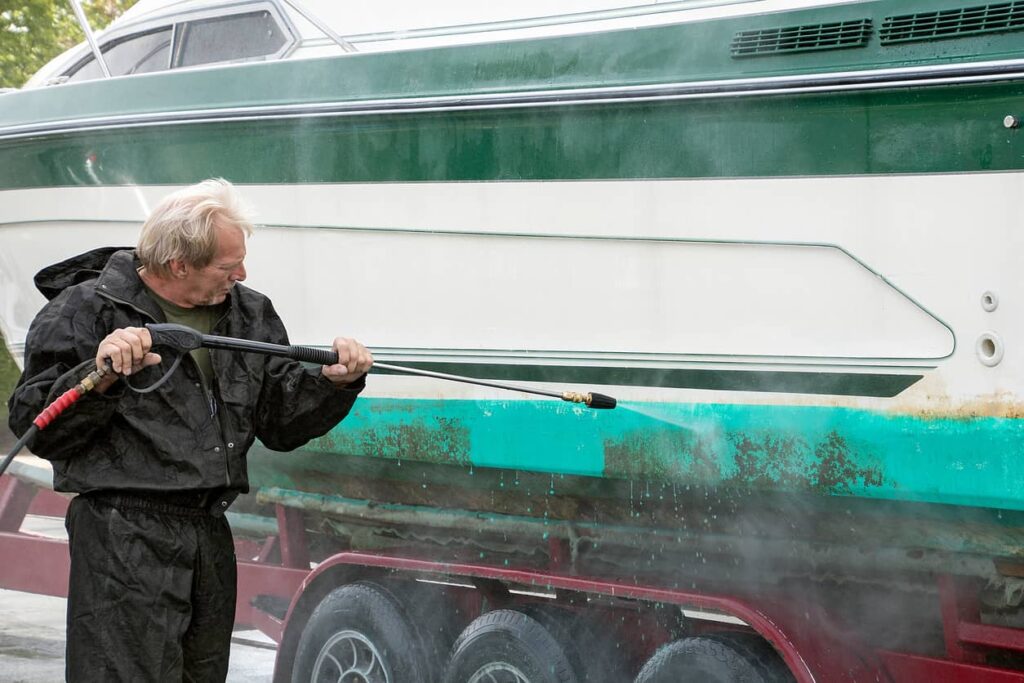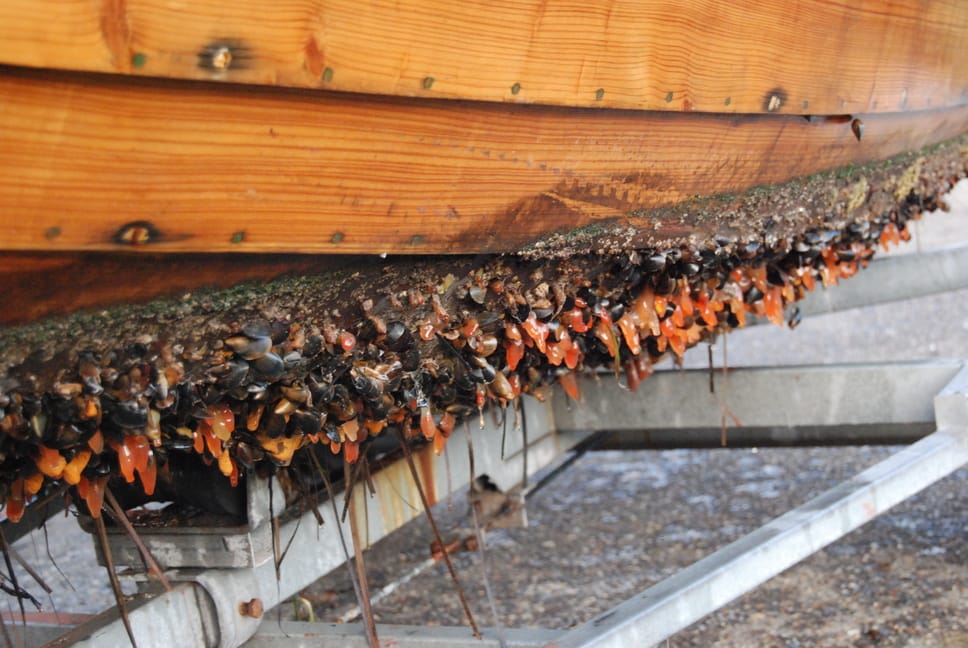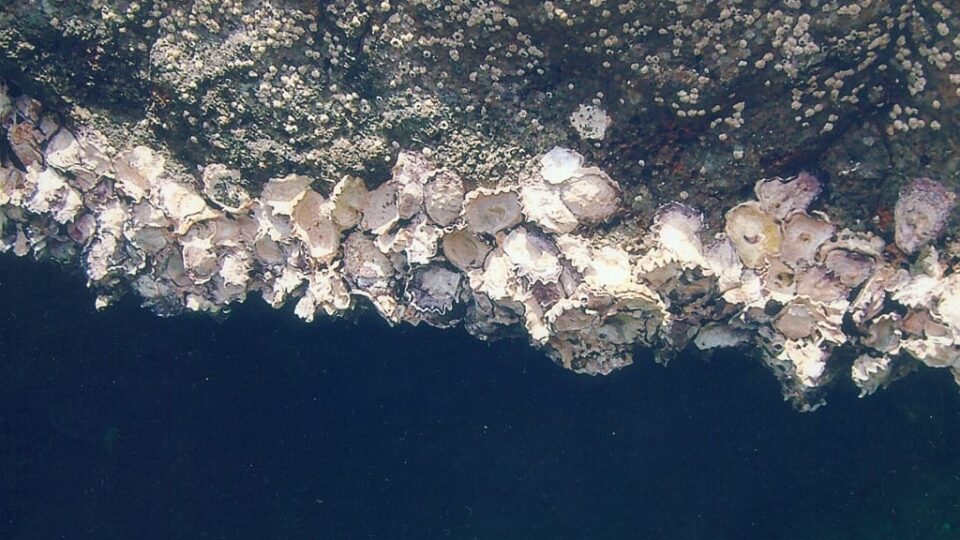Barnacle Removal without Scraping: How To
Yes, these tiny creatures, barnacles, that love attaching to whales, also love attaching to your boat. While this barnacle invasion is symbiotic for the whale, it is certainly not for your boat. When barnacles attach to your boat, keep in mind that removing them can be an intensive task to perform. The process of removing them is quite simple but you have to know what you’re doing otherwise you might end up causing more damage. Bear in mind that the more often you clean barnacles off your boat the less hard the job will be. If the removal process seems quite hard for you to do, there are professional services that can do it for you. However, in this article, I’m going to list you some ways in order to remove barnacles without scraping, so that you can take care of this problem yourself in no time. Follow me!
What are Barnacles and Why do they Attach to your Boat?
Barnacles attach to your boat’s hull, invade it and eventually make it their home. Removing them without damaging your boat’s hull can be a tiring task to perform, especially if your boat has a fiberglass hull. But let’s see what exactly are barnacles and why do they attach to your boat?
There are more than 1,400 species of barnacles that live in the marine environment, with the most common ones called acorn barnacles. Barnacles grow in many sizes, ranging from 1-2 centimeters wide, but some can even grow to 7 or more centimeters. Barnacles secrete a fast-curing cement that is one of the most powerful natural glues. This glue has a tensile strength of 5,000 pounds per square inch and adhesive strength of 22-60 pounds per square inch. All sailors know that the task of removing barnacles can be performed in different ways. The most common ones are elbow grease or a pressure washer. Their slang name, crusty foulers, is widely used by many sailors. But how barnacles stick to the underside of a boat or to other sea species?
Barnacles love places in which there’s lots of activity, like intertidal zones and volcanos. In these places they can easily attach to sturdy objects like rocks, buoys, or pilings. Moreover, moving objects like boats and their hulls, as well as whales, form the perfect living environment for these tiny critters. However, a colony of barnacles will result in increased drag, meaning that it will also reduce fuel efficiency because the engine has to work harder to keep up speed. All these will result in significant environmental and economic costs. According to the U.S. Navy, large barnacle growth on ships leads to increased weight and drag by as much as 60%, and therefore as much as a 40% increase in fuel consumption!
Barnacles feed with feather-like appendages named cirri. Cirri tend to extend rapidly and then draw back in the opening at the top of the barnacle. Afterward, cirri search in the water for microscopic organisms. If they sense a threat they withdraw back into their protective shells. As aforementioned, barnacles secrete calcium plates that completely cover the cirri. Then, a white cone composed of 6 calcium plates creates a circle around Crustaceans. Also, barnacles create another cone made of 4 plates which work as a door. Meaning that it allows the barnacles to get in or out, depending on the tide. For example, when the tide goes out, the barnacle conserves moisture. But when the tide comes in, a muscle opens the door so that the cirri can look for food.
First Method – Pressure Washing
Using a pressure washer to remove barnacles from your boat is the most common method. Pressure washing will be more effective if barnacles have remained on the surface for a couple of weeks. This method facilitates barnacle removal as the stream of water directly goes underneath the barnacles. The downside with this method is that it can strip paint or gel coat if too much water pressure is used. So, when using the pressure washer make sure to spray at a shallow angle and parallel to the boat’s surface.
Avoid spraying directly at the barnacles. What you want to achieve is to remove them with force but not smash them from above. That’s why spraying from a shallow angle is effective so as to get under their edges. This will make it easier to remove them because it directs the stream of water underneath the barnacles. These are the exact steps to follow when using pressure washing to remove the barnacles from your boat’s hull:
- Equip yourself with a power washer (at least 2000 PSI), rubber gloves, and protective eyewear. Optionally take some hydrochloric acid and a limescale remover, for harder problems.
- Remember to apply power washing to dry barnacles. If they’re not dry then consider removing your boat from the water and letting the barnacles dry for a couple of weeks.
- Before starting to apply this method make sure that you have a large and open area available to work in. Continue by spraying the barnacles with the power washer at an angle that reaches underneath the edge.
- Be cautious because too much water pressure might cause the barnacles to get away when they’re released.
- Always spray in small sections and be patient until all of the barnacles are removed from a particular section.
- When you have removed most or all of the barnacles, consider applying acid to the surface that can help to remove the remaining particles.
- After that, clean the whole surface with a limescale remover and wash the propellers attentively. Use a nylon brush to ensure that the calcium remover has gotten into the husks, and repeat this step many times to remove any last traces.

Second Method – Underwater High-Pressure Water Blasting
Vessels that have their underside surface below seawater or freshwater are subjected to various levels of fouling by marine or aquatic organisms. At the base of the fouling mechanism for ships are biofilms that reside on many parts of the boat. This biofilm constitutes the glue between marine or aquatic organisms and the vessel. So, as the biofilms are created the fouling organisms attach to all subsurfaces, like propellers, rudders, hulls, and protective grills.
So, in case you can’t remove the boat out from the water, you’d have to clean the barnacles off while the boat is in the water. If you’re keen on scuba diving or snorkeling then the whole process will be much easier. Remember that using a pressure washer for underwater cleaning is much easier than scrapping. Pressure washing can also be done even while being underwater. But, make sure to keep the main unit out of the water and just submerge the hose. Also, for the pressure washer to effectively remove the barnacles off the hull while underwater it needs to be pretty powerful. I would suggest one with at least 2500 PSI which you can pick even from Amazon.
In order to remain steady consider using a toilet plunger against the hull. This will help you keep your grip and let you perform the cleaning task efficiently. Another option is to run a rope around the perimeter of the hull so as to stabilize you while you clean. Of course, you can’t use any chemicals underwater so you’ll have to scrub the traces off with a steel brush.
Aftercare
Once you have removed all the barnacles, consider applying an antifouling coating to the hull. Like this, you’ll lower the possibilities of the barnacles attaching to your hull again. However, antifouling paints are likely to wear down so you’d have to inspect the surface regularly. Keep in mind that regular and thorough cleaning is the most effective way for dealing with the barnacle problem.
Another crucial problem regarding unchecked barnacles that have stayed on the hull for a while is a blockage. In other words, barnacles can block a large amount of water from the inlet and outlet ports on the boat. This blockage might result in an overflow in the boat or damage to important installations regarding water cooling mechanisms.
Third Method – Remove Barnacles with Non-Toxic Products
About 90% of the anti-fouling hull paints are based on copper oxide. This subsequently releases large amounts of copper into the seas and oceans. And that’s why scientists have developed new methods that minimize negative impacts on the marine environment. One of these methods consists of modification between the paint and the poison in order for the poison to remain inside the paint, thus minimizing its release into the water. And so, the barnacles use their adhesive ability to penetrate the paint. So, once the organisms attach to the surface, the poisoning begins to activate. One of the toxins used in this type of paint is ivermectin – a molecule produced by the bacterium Streptomyces avermitilis.
As aforementioned, the most common methods for barnacle removal are power washing and scraping with the use of heavy-duty chemicals. However, nowadays, the market has introduced new and environmentally-friendly products suitable for barnacle removal.
Let’s See Some of The Best Products:
Barnacle Buster by TRAC Ecological is a non-toxic liquid that helps to remove barnacles from your boat in a safe way. It’s also biodegradable and able to remove marine growth without harming the environment. This product is also widely used by many well-known companies, marinas, and boaters worldwide. Link to Amazon (recommended).
Another non-toxic limescale and calcium product is Triple7 Eco-Scale, which efficiently removes barnacles and can be used on boat hulls, bilges, pumps, etc. This product is based on a botanical formulation that is able to remove limescale, rust, barnacles, and crustacea from marine surfaces, without damaging the surface material. Furthermore, Triple7 Eco-Scale is a safe and eco-friendly product that is particularly designed for application in enclosed and sensitive marine environments, thus ensuring health and safety measures.
Another environmentally-friendly product is the GreenBioClean Barnacle Remover which is also used for application on heat exchangers and cooling systems. It efficiently removes mineral and barnacle buildup from the boat but also from cooling systems, pipes, and boilers. An environmentally friendly and safe to use descaler liquid that removes barnacles and scale build-up from your boat. Lastly, it minimizes harmful effects on the marine and human environment and can be applied to steel, copper, iron, and plastic PVC materials.

Useful Tips for Barnacle Removal
- Barnacles contain bacteria and some of them are harmful to your health. That’s why you should wear protective gloves, eye protection, and a specialized mask that prevents bacteria-covered particles of barnacles and algae from getting in your face while pressure washing. Then again, if you choose to apply acid to remove barnacle traces then you have to use heavier equipment. For example, a respirator that can filter acid gasses, a full-body cover, a full-face protector, and acid-resistant gloves.
- Keep in mind to take precautions while removing barnacles otherwise you increase the risk of damaging your boat’s hull. So, try to work precisely and maintain a steady removing technique so as to avoid repairing or refinishing the hull afterward.
- If you spot barnacles at their early stage and you’re not using power washing don’t let barnacles dry. This is because, if barnacles are left to dry, their attachment to the hull will become more powerful and therefore will be harder to remove. So, avoid lifting your boat out of the water until you start removing the barnacles.
- After removing your boat out of the water the first thing to do is to maintain the hull. For instance, you can change outboard external anodes and zincs, as well as thru-hull fittings, propellers, and sterndrive. Check if these require replacement or just simple maintenance.
- Lastly, when you have removed barnacles consider protecting your hull from future invasions. You can wax the hull or paint it with eco-friendly anti-fouling bottom paint. Both treatments add a protective layer to the hull and prevent future marine growth and barnacle invasions.
How to Remove Barnacles From a Fiberglass Hull Without Scraping – The Bottom Line
Even though barnacles are important for the balance of the ecosystem they cause serious problems to boats. But, as explained in this article, there’s no longer the need of using heavy-duty chemicals to remove barnacles. Also, there’s no need for scraping and therefore elbow grease is significantly reduced. You can remove barnacles via pressure washing and the use of non-toxic products. Avoid using heavy-duty chemical substances such as muriatic acid, oxalic and phosphoric acids, and caustic cleaners. These toxic and harmful chemicals have serious impacts on the local waters and ecosystem. And many sewer systems have no filtering in place, so all these chemicals will eventually end up in the ocean, in a local river, or a stream. So, consider choosing the green and responsible methods for barnacle removal. See you soon and wish you safe voyages!
